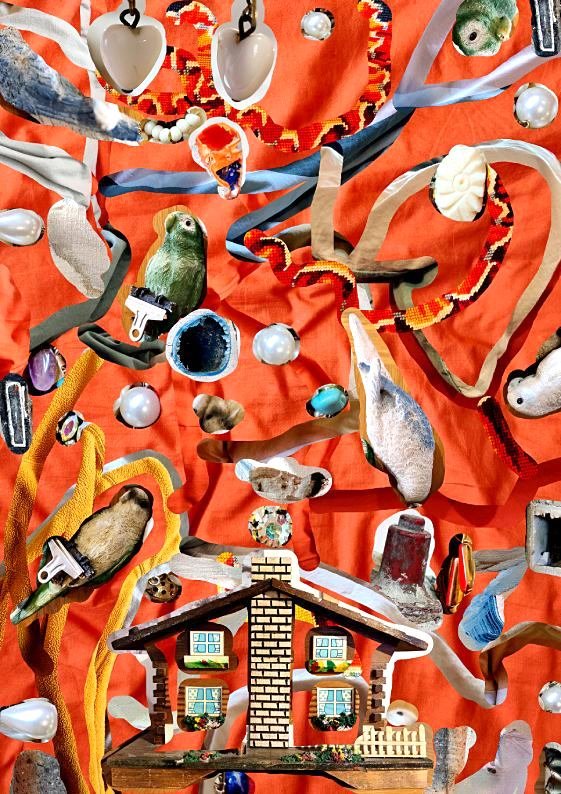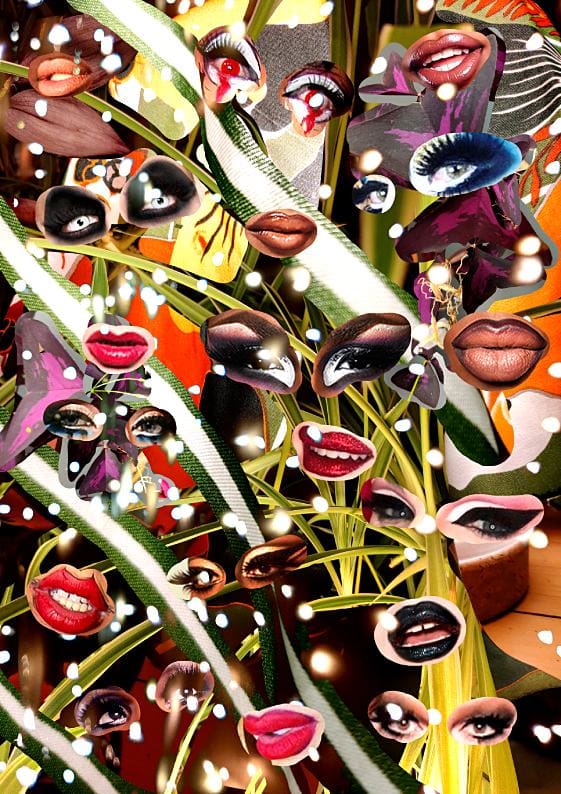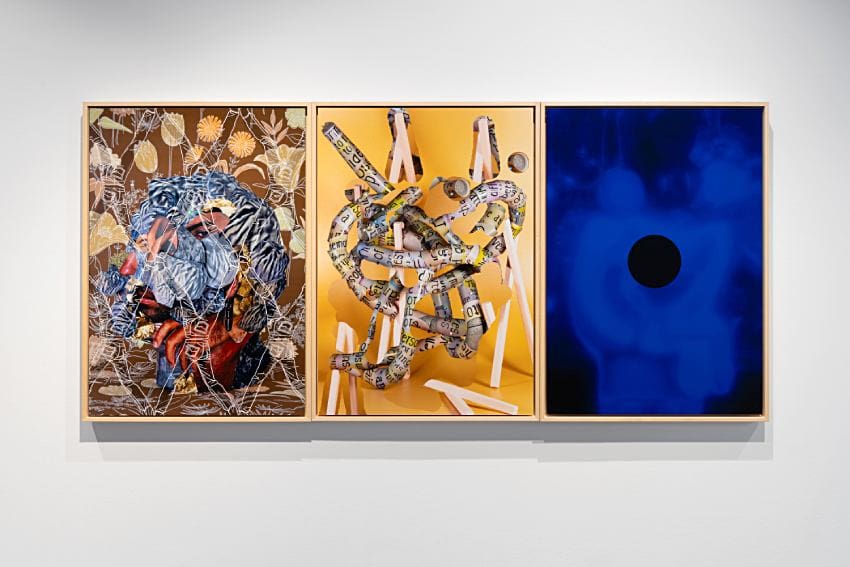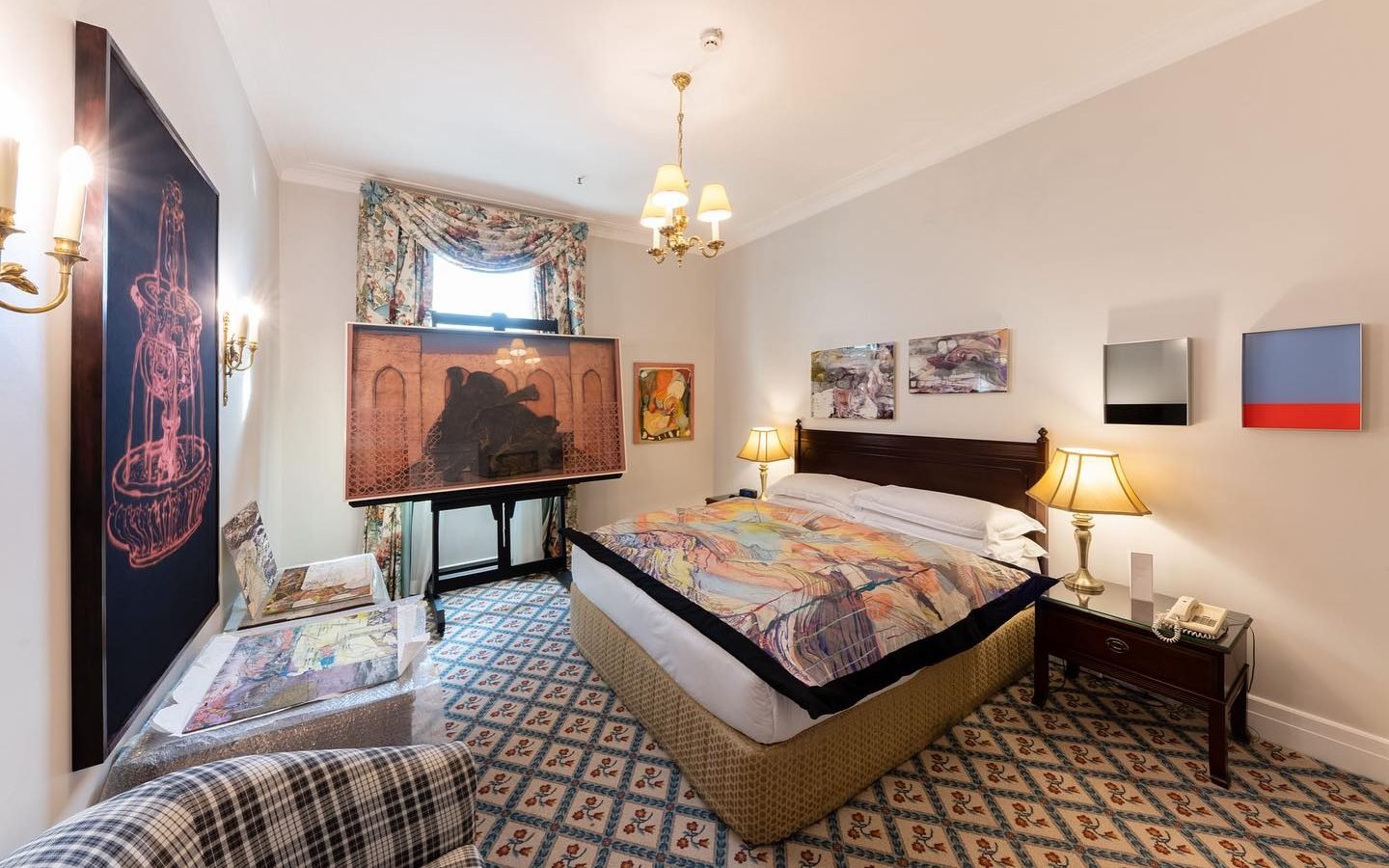Matthew Bamber Dream home, (wet), 2020
HOME’s Artist Development Producer for Visual Art, Alice Wilde, delves deep into Matthew Bamber’s artistic journey and exploring the work in his solo exhibition ‘Dream Home’ currently on display in HOME’s Granada Foundation Galleries.
ALICE WILDE: I thought we’d set things off with a simple yet important question… can you tell me a bit about your journey so far?
MATTHEW BAMBER: In 2016 I did a residency at Atlantic Center for the Arts in the US. I was part of a very small group of amazing artists from all over the world, collectively we were all led and mentored by international artist Josiah McElheny. It was possibly the most amazing three weeks of life. It felt a bit cultish but I left that residency thinking it is actually possible to be an artist. This spurred me on to do an MA and subsequently an MFA. My approach during these postgraduate degrees was just to turn my practice on its head and have an anything-goes approach. I remember going into one of my first crits, with my supervisor, Ian Rawlinson, with just a bunch of found images from the internet that were mostly related to violence, in some way or another. I felt really stupid but, at the same time, it felt really honest. It was quite liberating. Prior to the MA I was making really peaceful, contemplative video installations which I think I was hiding behind. I spent a lot of time on my MA looking at images and learning about the different ways they operate and are constructed. To me it felt important considering the amount of images I’m bombarded with on a daily basis. I was reading stuff like The Gulf War Did Not Take Place by Jean Baudrillard and Eyal and Ines Weizman’s Before and After. I was also studying still life and Baroque painting – which still influences how I make pictures. And I guess all of this questioning and exposure to found imagery mutated into the visual language that I use today.
ALICE WILDE: How would you describe your work in 3 words?
MATTHEW BAMBER: Sexual, photoshop, Baroque
Matthew Bamber Dream home (sit)
ALICE WILDE: It’s interesting thinking about the start of your artistic journey and how you’ve shifted from the vastness of found images from the internet to focusing on capturing intimate snapshots from your home. Could you share with us what prompted this shift and how this has influenced your artistic practice?
MATTHEW BAMBER: I think the element of ‘vastness’ stayed with me, especially in a pictorial sense. This idea of over-consumption and thinking about how we see the world through the imagery we consume is something that is present in most of my work. I still use a lot of downloaded images from the internet which are often combined with my own personal images. With regards to the Dream Home works, I was interested in ideas that connected collage and queerness, and an essay I had read linked this to domesticity through, for example, Robert Raushenberg’s works and private life. This planted a seed that led me to where I am now. There is a current shift in my work to an interest in queer domesticity and I think this will continue to grow and develop for a while. A couple of years ago I learnt an important lesson which was to allow myself to make work that I wanted to make. This might sound really stupid and obvious but it’s actually a really hard thing to allow yourself to do.
But, yes, the Dream Home series, in the exhibition, is almost entirely constructed out of digital shots using my phone camera (except for the drag queens in Dream home, sit). The angle and look that I achieved using a phone camera, as opposed to a DSLR, worked so much better – it’s like the images felt more immediate and intimate. The work explores my own home as a queer domestic space and it came together in a very intuitive way, it just sort of happened without too much over-thinking. I was documenting decades of homemaking that had happened between myself and my partner – everything I needed to make it happen was right there in front of me. It’s worth mentioning that this took place during lockdown so my home had taken on this new, weird, hyper-focussed meaning. At the moment I’m developing other pieces around ‘queer domesticity’. I’ve recently made a textile folding screen that I’m very excited to show and I also have plans to expand on Dream Home focussing on different queer spaces, both historical and contemporary.
ALICE WILDE: It is really exciting that you are moving in to developing more works around ‘queer domesticity’ . Could you perhaps explain what this term means to you and how it has influenced your work?
MATTHEW BAMBER: For me queer domesticity is another way of talking about queer identity past and present. The exhibition title and artwork Dream home is inspired by Oscar Wilde’s lecture, “The House Beautiful” (1882), which provided instruction on interior design along the lines of the Aesthetic movement. My thinking through my own domestic spaces in the Dream home artworks was inspired by histories and archives of interior décor of queer ‘late-Victorian Aesthetes’, such as Wilde – and artists like Charles Ricketts and Charles Shannon – as well as more recent examples of what might be called ‘queer domesticities’. Looking and reading about these historical spaces provides me with a queer history that is very relatable to my own life. Making a home, a life of your own is something that everyone does, but thinking about inhabiting a space queerly can have quite different meanings for a marginalised person. Michael Hatt argues that queer Victorian “interiors were not closets […] spaces where a true homosexual self resided apart from the world […] but nor were they […] ‘performative’ spaces where a homosexual self came into being. They were, rather, attempts to create spaces, where private desire and public self were integrated, where all one’s experience could be invoked and unified.” Questioning this complex idea of inhabiting spaces queerly has shaped my ongoing interest in queer domesticity in Dream home and works I have made since.
The show has only been open for just over a week and I have had visitors to the show message me to tell me that they really related to the work on many levels, which is so lovely to hear. The works are still revealing themselves to me, they are making associations that I had not even considered. I think queer domesticity is many things but, in terms of Dream home, maybe the snapshots of intimate domesticity on show can, in some way, help us develop our sense of selves. This could be similar to how queer archives can act as spaces where queer subjects are formed, or can put themselves together.
Matthew Bamber Dream home (eat)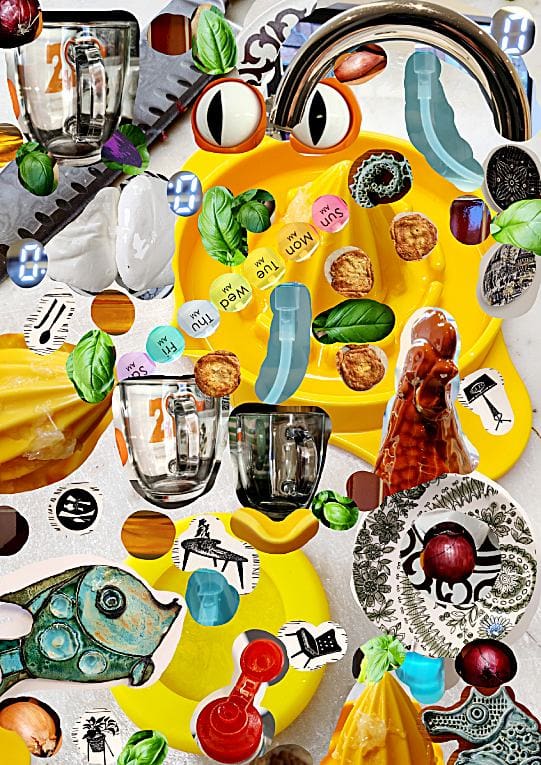
Matthew Bamber Dream home (eat)
ALICE WILDE: It has been wonderful to see how ‘Dream Home’ has resonated with audiences. You have mentioned queer history past and present, I’m curious about how your own interpretation of queer history has developed over the years. I’m thinking particularly in relation to contemporary discourses and how this is represented in your work?
MATTHEW BAMBER: As an artist who first took an interest in queer history in the late 1990s, I have lived through enormous shifts in public attitudes towards the LGBTQIA+ community in the UK. Sadly, oppressive rhetorics are still in use today; especially, the hate speech targeting the trans community, peddled by politicians and the media seeking to divide us for their own political gains.
The starting point for the GM series, also on view, was as a reparative commemoration of the public toilet in Beverly Hills where George Michael was arrested in 1998 for a ‘lewd act’ and how this story played out then and what this means now. The George Michael story evolved into exploring more themes related to the LGBTQIA+ community and its broad recent history, drawing inspiration from my personal memories, extensive research into queer theories, and sociological studies. Each artwork within the series revolves around a different theme like shame, ‘outness’, family values, and surveillance, for which I collected related imagery. Each work is a kind of a conglomerate of all these diverse materials and invisible associations represented in a singular image.
ALICE WILDE: Thanks so much for your incredibly thoughtful answers. It’s been a pleasure chatting with you and I really appreciate you sharing all this with me. As we wrap up the interview, I’d like to ask what’s next? Are there other projects coming up or anything that you’re excited to share with us?
MATTHEW BAMBER: Thinking about what’s next – I’m still settling into a new dynamic now I’m not participating in postgraduate studies. Now out of this educational bubble, I’m actively pivoting my practice to be much more outward facing. I’ve been super focused, this past year, building up a catalogue of exhibition-ready work. So now I’m in a really good position to start exhibiting this new work as I go forward. I feel so lucky to have participated in such great shows recently, in some amazing organisations, and want to continue this positive trajectory but with a bit more direction, if that makes sense. I’m applying to an artist residency in Canada too that I’ve had my eye on for years. It has been a long time since I’ve done one and know, from past experience, the benefits of having some distance, both physically and mentally, in a residency context can be extremely nourishing for an art practice. I feel much more open and ready than I’ve ever been as an artist, and I’m excited to see what happens.
Matthew Bamber Exhibition view detail, GM series, HOME, 2024 (Image credit: Jules Lister)

